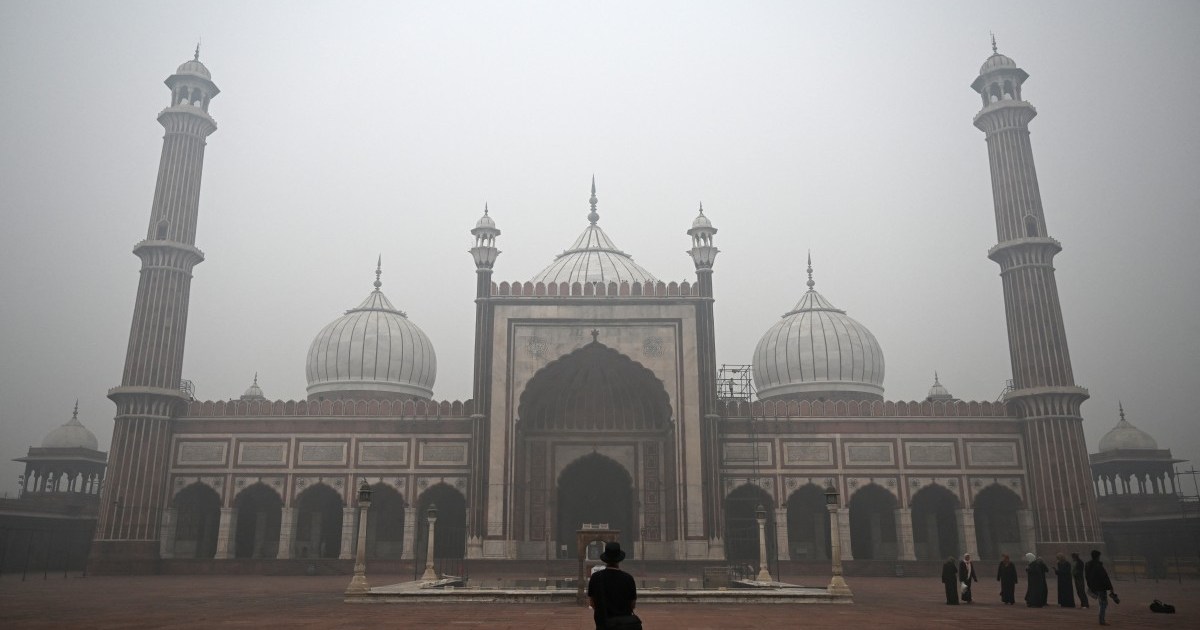Inside Delhi’s inaugural clinic focused on pollution-related health issues, Deepak Rajak struggles to breathe. The 64-year-old’s asthma has intensified recently, prompting his daughter to hurry him to the clinic, worried about his rapidly declining condition. While in the waiting area, Rajak shares with CNN that he feels “very breathless” and is unable to stop coughing. “It’s impossible to breathe. I just took the bus, and it felt like I was suffocating,” he explains.
Established last year at Delhi’s Ram Manohar Lohiya (RML) hospital, the specialized clinic aims to address the rising number of patients suffering from severe air pollution, which aggravates each winter in the Indian capital. Outside, a choking layer of toxic smog has enveloped the city since late last month, obscuring visibility, disrupting flights, and threatening the health of millions.
According to global air quality monitors, no other place on Earth has air as detrimental to human health as Delhi right now. The situation has deteriorated to such an extent that Delhi’s Chief Minister Atishi declared a “medical emergency,” leading to school closures and urging residents to remain indoors.
However, for Rajak, staying home isn’t an option, as he depends on his dry-cleaning job to support his family. “What can I do? I have to go to work,” he states. “If I don’t earn, how will I eat? When I step outside, my throat feels completely blocked. By evening, it’s as if I’m lifeless.” Rajak has already been hospitalized once this year due to the worsening effects of smog on his asthma.
With no respite from the perilous pollution, his daughter Kajal Rajak fears he may need to be hospitalized again, adding financial strain to their already challenging situation with the costs of inhalers and diagnostic tests. She notes that even the trip to the clinic was risky. “You can’t see what’s ahead of you,” Kajal says. “At the bus stop, we couldn’t even make out the bus number or tell if a bus was coming – that’s how hazy it was.”
‘LIKE CHILI IN MY EYES’
This week, pollution levels in some areas of Delhi surpassed 1,750 on the Air Quality Index, as reported by IQAir, which monitors global air quality. A reading above 300 is deemed hazardous to health. On Wednesday, the PM2.5 levels, the smallest and most harmful pollutant, were recorded at over 77 times the safe limit set by the World Health Organization. CNN has reached out to the Indian Ministry of Forest Environment and Climate Change for a statement.
When inhaled, PM2.5 penetrates deep into lung tissue, potentially entering the bloodstream, and is associated with asthma, cardiovascular and lung diseases, cancer, and cognitive impairments in children. Over the past week, CNN spoke with around a dozen residents of Delhi, most of whom reported difficulty breathing due to pollution.
Many described feelings of suffocation as the toxic air caused their eyes to burn and throats to itch. “It feels like chili in my eyes,” remarked Mohammad Ibrahim, a long-time auto driver in the city, adding that he constantly experiences chest pain from working outdoors in the pollution all day.
“When I return home in the evening and wash my hands and face, black stuff comes out of my nose. That never used to happen before,” Ibrahim said. Like Rajak, Ibrahim cannot afford to stop working despite the risks to his health. “If I don’t go out to work, how will I feed myself? How will I pay my rent? I am a poor man,” he lamented.
Some vulnerable residents express that survival in Delhi has become increasingly difficult. Retired Indian Air Force member Aditya Kumar Shukla, 64, stated that he tries to avoid going outside on polluted days.
“You can’t do anything (to protect yourself from the pollution); even indoors, the air is very dirty,” he told CNN from Delhi’s Batra hospital, where he is receiving treatment for asthma. Shukla mentioned he has been hospitalized three times this year and would relocate if possible. “It causes stress and is very dangerous, but where can I go at this point?” he asked. “It frustrates me a lot; I want to leave Delhi, but there are no facilities in India, especially for those with asthma and lung diseases.”
At the pollution clinic, Dr. Amit Jindal reports a significant rise in patients with chest and lung issues since pollution levels surged. He confirmed that the increase is directly linked to the smog, with patients suffering from persistent coughs, chest and lung problems, and stinging eyes.



